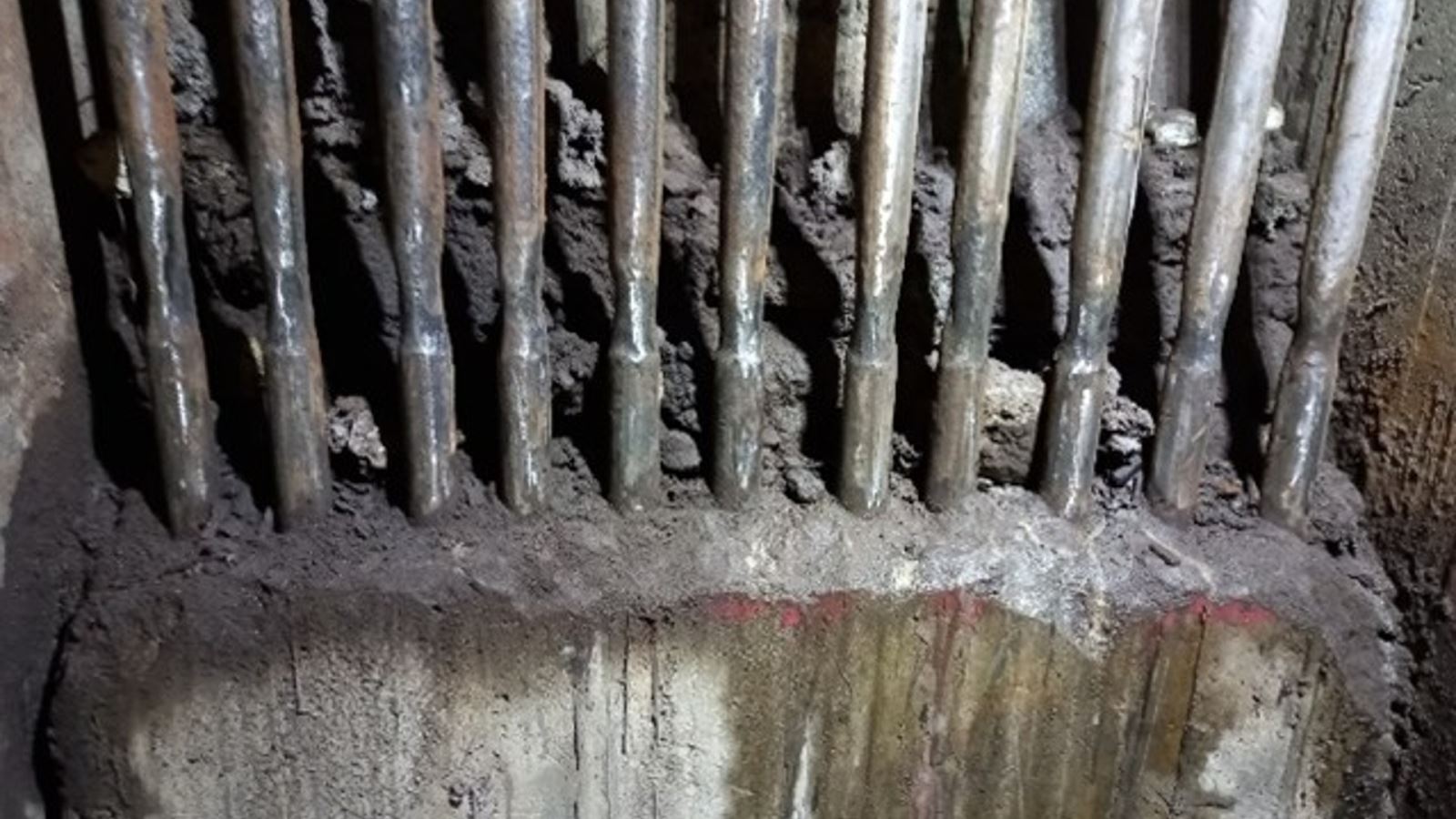Complex work to repair Bath’s historic Cleveland Bridge has revealed previously hidden, unexpected and severe corrosion on a critical section of the structure.

Image: Corrosion of hanger bars once concrete had been removed. The bars are part of the bridge support on the Cleveland Place side of the bridge on the right-hand side if looking towards Cleveland Place.
Further analysis will be carried out to find out the options for repair and the current traffic management will remain on the bridge with an anticipated update on options for the next steps in early April.
The ongoing safety of users of the bridge and those nearby is of overriding importance.
The delay for further technical examination and options for repair will not stop events happening in the city including the Bath Half Marathon, however repairs must be completed before the bridge could safely reopen.
Contractors carrying out works at the end of January on the hanger bars, which support the main trusses of the bridge, made the discovery leading to further technical assessments over the past few weeks.
The issue is serious enough to risk structural failure of the bridge were it to reopen to all vehicles before repairs are carried out but the council is assured there is no danger in keeping the bridge open under current traffic management.
The technical experts assessed the hanger bars prior to work starting on the bridge last year and identified the need to clean and paint them, however a routine technical test in January this year identified a need for further investigation. Concrete was then removed from the hanger bars which uncovered severe corrosion caused by water and chloride (as shown in the photograph attached).
Further analysis needs to take place to assess any options for repair to the unique Grade II* listed structure.
The current traffic management at the bridge will remain in place. Pedestrians, cyclists and cars can use the bridge under signals and an exception has been made for emergency vehicles, which can access the bridge via a gate specifically for their use.
Councillor Manda Rigby, cabinet member for Transport, said: “Safety is my first priority. This type of bridge would not be found anywhere else in the world and its historic nature should be celebrated. However, renovating a 200-year-old bridge with a concrete structure added 100 years later is an incredibly complex, unique civil engineering project which always carried the risk of discovering issues that could not be anticipated.
“When undertaking the repairs only small areas of concrete can be removed at any one time to prevent the risk of failure. Any solution which might be possible is bespoke and complex and shows the severe difficulty making a historic structure like this suitable for modern-day usage.
“Now further analysis will be carried out to find out any options for repair but until we have that information we are unable to give a timescale for potentially removing the current traffic management on the bridge. We will give an update in early April including the next steps for the project.
“I’d like to underline that this will not stop events happening in the city including the Bath Half Marathon, but it’s essential that these repairs are completed before the bridge could safely reopen to all traffic and so we ask for people’s continued patience.”
Diversion routes for all other vehicles and through traffic on the A36 via South Gloucestershire are available on the council’s Cleveland Bridge webpage, alongside background information on the renovation project.
Related
Comments
Nobody has commented on this post yet, why not send us your thoughts and be the first?













